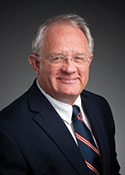Let’s Get Physical
Exercise as a Key Component in Cancer Recovery
by G. Stephen Morris, PT, PhD, FACSM, and Nancy V. Paddison, PTA, BA, CLT-LANA
For many people, exercise is an important part of their everyday routine. But for many cancer survivors, exercise and other forms of physical activity are the first things to fall by the wayside after diagnosis. Given the rigors of cancer treatment and the demands it places on your time, it’s easy to see how exercise can become less important and be easily left off the schedule. However, let’s not be too quick to write off exercise after cancer. Research suggests that exercise can improve your physical fitness, your emotional health, and your overall quality of life – even during cancer treatment.
If you’ve been diagnosed with cancer, the sooner you start exercising, the better you’re going to feel (and the sooner you’ll start seeing benefits). However, you should first talk to your healthcare provider to make sure it is safe for you to exercise, and to find out if there are any activities or exercises you should avoid. If your doctor clears you to exercise, you may want to ask for a referral to a physical therapist who is experienced in working with cancer survivors. A physical therapist can evaluate your fitness level, assess and treat any physical limitations you may have (whether cancer-related or not), and design an individualized exercise program for you. In some cases, your physical therapist may even supervise your exercise program and monitor your progress. You can work with a physical therapist regardless of whether you are receiving treatment in the hospital or in an outpatient setting.
If you can’t work with an oncology physical therapist to receive an individualized exercise plan, look for exercise programs in your community that are designed specifically for cancer survivors. For example, the Livestrong program is offered free or at a reduced cost to cancer survivors at local YMCAs, and you don’t have to be a member of the Y to quality for this program. Local hospitals and even some health clubs also offer exercise programs for cancer survivors. Ask your healthcare team for information on programs in your area.
Getting Started
Before developing a fitness plan, your physical therapist will want to get an idea of your pre-diagnosis exercise habits, which for some people may mean no previous exercise at all. And that’s OK. If you did not exercise prior to cancer, there is no better time than now to start.
Your exercise program should have these three components: aerobic exercise (such as walking, jogging, swimming, or bicycling), strength training (to tone and build muscle), and a stretching routine (to keep muscles and joints limber and to prevent injury). Your physical therapist or fitness professional can help you determine how long and how often you should exercise (duration), how hard you should work out (intensity), and how to progressively increase exercise duration and intensity so that you continue to build your endurance and strength.
Here’s what exercise can do for you!
IMPROVES
- Strength
- Physical function
- Endurance
- Range of motion and mobility
- Chemotherapy completion rates
- Body image, self-esteem, and mood
REDUCES
- Treatment side effects
- Length of hospital stay
- Psychological and emotional stress
- Movement restrictions
- Extended treatment time
- Depression and anxiety
In general, you should start slowly, with a long-term goal of exercising for 30 minutes at a time, five times per week. If you’re new to exercise, you may want to try working out for just 10 minutes each day at first, and then gradually building up to 30-minute exercise sessions. It’s also important to slowly ramp up the intensity of your exercise sessions. By increasing intensity gradually, you’ll be better able to build up your endurance and strength safely and without injury. These increases can be implemented weekly, and they can be small (for example, adding just one to two pounds or an extra repetition to your weightlifting routine). Keep a log of your exercise sessions: record the date, what exercises you did, how long you did them, and how you felt afterward.
Here’s an example of what a 30-minute exercise program might look like:
- 10 minutes doing a cardio warm-up, like walking or stationary cycling
- 5 minutes of stretching, including whole body, shoulder, hip, calf, and trunk stretches
- 10 minutes of strength training using light weights, alternating arm and leg muscle groups of the body
- A 5-minute cool-down with light walking and/or more stretching.
Start slowly, with a long-term goal of exercising for 30 minutes at a time, five times per week.
Take 5
Exercise Tips for Cancer Survivors
- Choose activities you enjoy but that are physically challenging. If you like to take walks, then walk. If you prefer cycling, then cycle.
- Be mindful of your environment. You want your surroundings to be conducive to exercise. Walk outside with a friend, or listen to music while pedaling a stationary bicycle or walking on the treadmill.
- Dress comfortably and wear supportive shoes. No flip-flops, clogs, or open-toe shoes.
- Warm up at the beginning of each exercise session and cool down at the end. Don’t just stop abruptly.
- Drink plenty of fluids during and after each workout session.
Keeping It Going
It’s natural to experience some delayed muscle soreness when starting a new fitness program or trying new exercises. Your muscles will react to the new demands about a day after you begin (or add new challenges to) your routine, but this discomfort should last no more than 24 to 48 hours. So, don’t let it discourage you.
Make sure you keep an eye on your fatigue levels so you can know if you are exercising too hard, too little, or just the right amount. As a rule, you should expect to be a bit tired after an exercise session, but that fatigue should disappear fairly quickly afterward. If fatigue lasts for several hours after you finish a workout, then you are probably doing too much. The next time you work out, either reduce the time or duration of the session or decrease the intensity of your exercise.
You’ll probably have days when you lack the energy to complete a full exercise session. That is OK, but it is important to keep up your exercise routine. So work out on those days but scale back your activities, doing what you feel able to do. It’s also important to get moving periodically throughout the day. Sitting for an extended period can limit the benefits of exercise, so consider standing up while talking on the phone, pacing your living room during television commercials, or setting an alarm to remind you to stand up and move a little bit every hour.
Having cancer shouldn’t be an excuse to avoid exercise; rather, it provides a reason to start exercising. Just remember to start slowly, gradually increase the demands of your exercise sessions, and, most important, listen to your body. If you stick with it, exercise can be an integral part of your recovery from cancer.

Nancy Paddison is a lymphedema-certified senior physical therapist assistant at the University of Texas MD Anderson Cancer Center in Houston, TX, where she has worked in the outpatient rehabilitation services department for 11 years.

Dr. Stephen Morris is a professor in the Department of Physical Therapy at Wingate University in North Carolina, president of the Oncology Section of the American Physical Therapy Association, and a member of the planning committee of the American College of Sports Medicine’s International Multidisciplinary Roundtable on Exercise and Cancer Prevention and Control.
This article was published in Coping® with Cancer magazine, November/December 2017.


